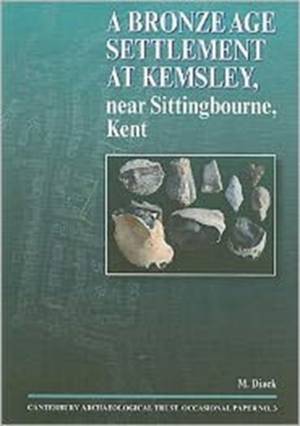
- Afhalen na 1 uur in een winkel met voorraad
- Gratis thuislevering in België vanaf € 30
- Ruim aanbod met 7 miljoen producten
- Afhalen na 1 uur in een winkel met voorraad
- Gratis thuislevering in België vanaf € 30
- Ruim aanbod met 7 miljoen producten
Zoeken
Omschrijving
A programme of archaeological investigation was carried out by Canterbury Archaeological Trust in advance of a new housing development at the town of Kemsley, near Sittingbourne, Kent between 1998 and 2003. Late Mesolithic to Early Bronze Age activity was indicated by lithic artefacts, though these were residual and there were no archaeological features dating from this period. Archaeological features noted on site date from the Middle Bronze Age onwards. Three Middle Bronze Age phases of activity were identified. The earliest phase consisted of a single narrow ditch located in the north-western part of the site, thought to represent the establishment of an agricultural field system. This was followed by an elaboration of the same field system with a further field system established to the west as well as a scatter of pits and post-holes throughout the site thought to be related to the field system. Settlement on the site was suggested by two possible round-houses and by a fire pit or oven. The final phase of Middle Bronze Age activity consisted of a roughly square enclosure that truncated both the later field system and the original narrow ditch. Activity continued on the site through to the Late Bronze Age with two phases of activity noted. The earlier phase consisted of further ditches representing agricultural field systems in the western and eastern parts of the site, as well as scattered pits and post-holes. A large circular enclosure, with associated features including a cobbled surface, was also noted in the south-western part of the site. The later phase of Late Bronze Age activity consisted of a continuation of the field system in the eastern part of the site as well as various other features scattered throughout the site. The next dated period of activity consisted of medieval period linear features in the north-eastern part of the site. A large number of features remained unphased and undated, though many of these were probably also of a Bronze Age date and related to both the agricultural and settlement activity noted elsewhere.
Specificaties
Betrokkenen
- Auteur(s):
- Uitgeverij:
Inhoud
- Aantal bladzijden:
- 70
- Taal:
- Engels
- Reeks:
- Reeksnummer:
- nr. 3
Eigenschappen
- Productcode (EAN):
- 9781870545099
- Verschijningsdatum:
- 1/12/2006
- Uitvoering:
- Paperback
- Formaat:
- Trade paperback (VS)
- Afmetingen:
- 206 mm x 290 mm
- Gewicht:
- 362 g

Alleen bij Standaard Boekhandel
+ 46 punten op je klantenkaart van Standaard Boekhandel
Beoordelingen
We publiceren alleen reviews die voldoen aan de voorwaarden voor reviews. Bekijk onze voorwaarden voor reviews.











